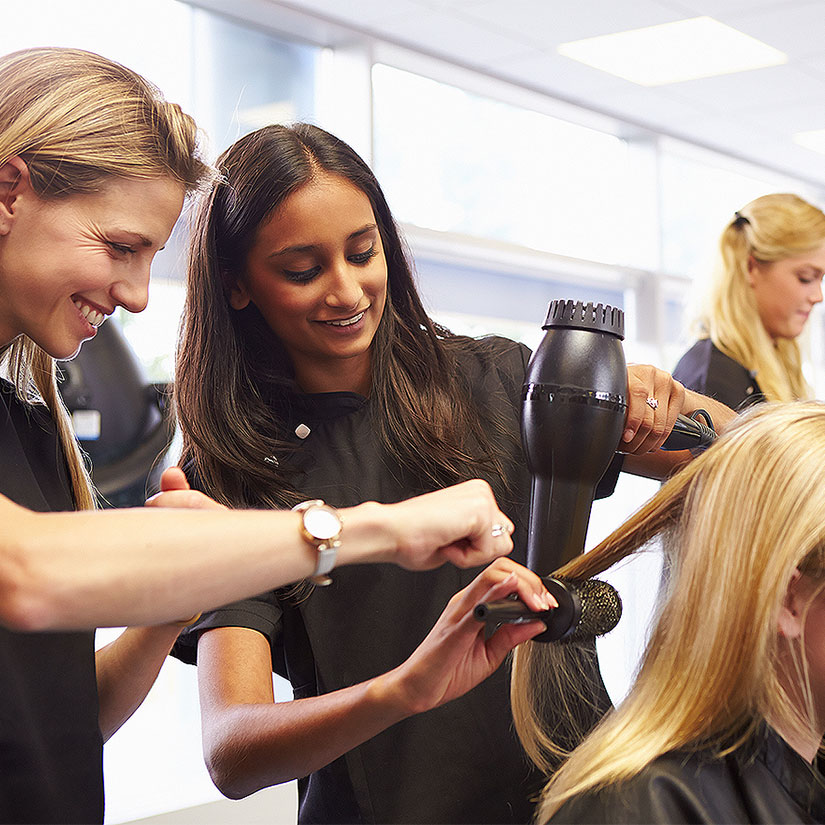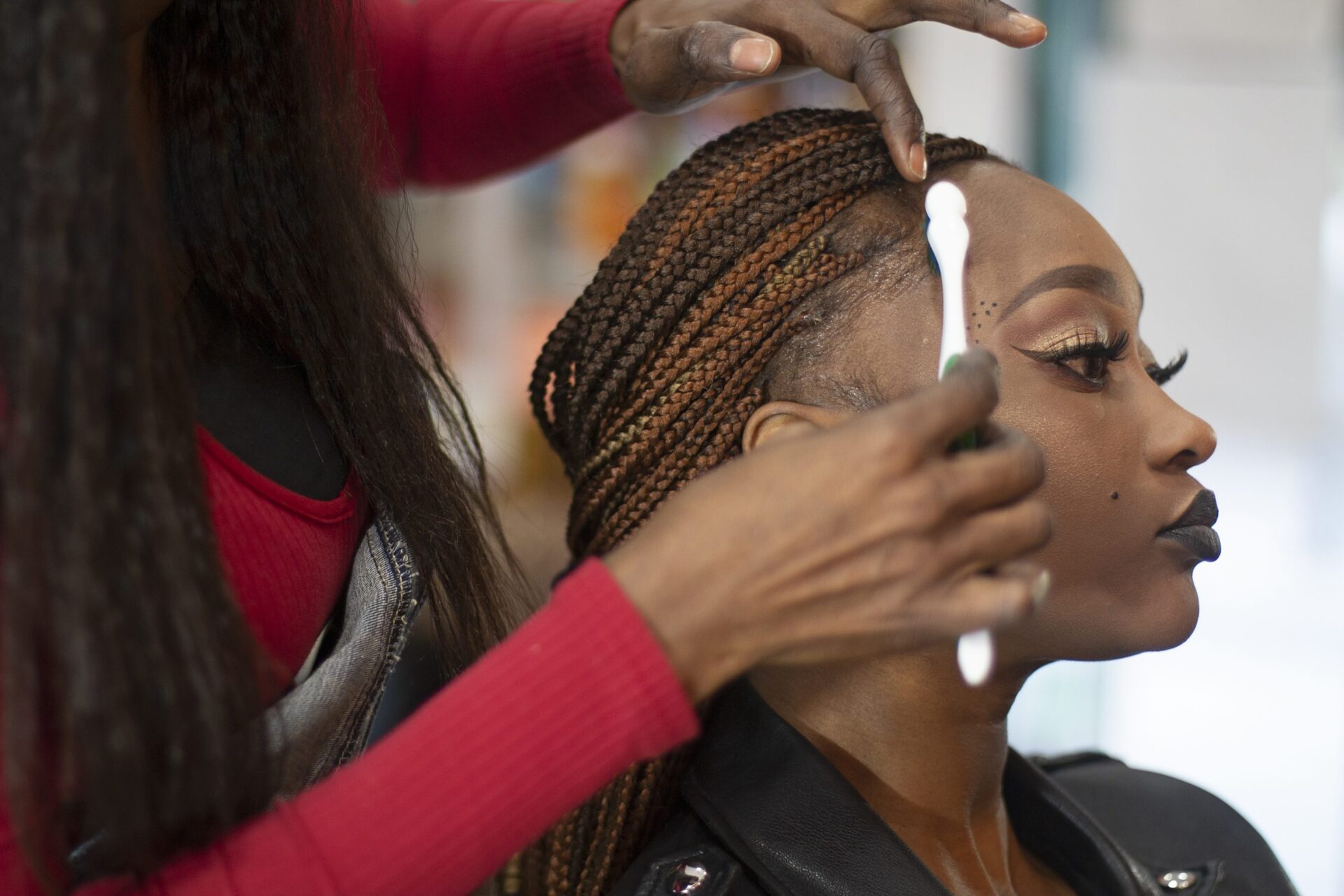coffeeflavour – stock.adobe.com
Today we see celebrities like F.K.A. Twigs, Zendaya, and Beyonce embracing their natural hair in elegant and creative ways. One of the iconic natural hairstyles that these artists have made famous is Hair Edges or Baby Hairs.
What Are Hair Edges?
Hair edges, also commonly known as baby hairs or swooped edges, are the short hairs found in textured hair types in the hairline area. For many years, women of color have used these hairs to create stunning hairstyles that many have considered to be works of art. The look has been a prominent part of pop culture and tends to make a comeback every few years whenever another celebrity gives the celebrated look a try.
Most commonly seen on Black or Brown women’s hair, edges result from taking something that usually would be overlooked in a hairstyle and making a fun and intricate design out of it. You can be as creative as you want to be when it comes to this look and swirl your hair to perfectly frame your face for a unique and enchanting look.
The unique artistry known as “laying” hair edges has turned into a cultural phenomenon that those with textured hair work on to perfect. It helps create the ideal finishing touch to their favorite hairstyle.
Although swooped edges have recently become popular, this hairstyle has been around for over a decade. For example, icons like Chilli from TLC started rocking hair edges back in the 90s.
As a result of this pop-culture impact, more and more women of color are doing swooping edges as their signature style.
Step-by-Step Guide to Do Your Edges
1. Separate Your Edges
The first step is to separate your edges from the rest of your hair. To do so, we strongly recommend using a comb. To avoid root damage, make sure to be gentle while separating your edges.
Tip: If you have a hard time separating your edges, try applying some water to them.
2. Swoop and Style Your Edges
This is where the fun starts: styling! To style your hair edges, you’ll need an edge brush with firm natural bristles. However, if you don’t have one, a new toothbrush will do the trick. You will also need hair gel — we recommend Eco Styler by Eco Plex since it contains natural oils and works wonders as an edge control gel.
When swooping and styling edges, it is crucial to work section by section. To start styling, grab some gel and apply it only in a tiny section of your edges. Before the gel dries, start swooping and styling your edges. Make sure you brush the section until it is nice and sleek. If necessary, apply more gel. Repeat the same process with the remaining sections.
Tip: For styling your edges, we recommend starting from the top to the bottom of your hairline.
3. Wrap-Up Your Edges
After all that hard work you put into styling your hair edges, you want them to last throughout the day. To do so, we recommend wrapping a silk scarf around your edges/head. Ideally, it would be best if you wrapped the scarf slightly tight.
Remove the scarf after waiting ten minutes, and you are done!
Who Created Edges? The Origins of This Iconic Hairstyle
According to details from Essence Magazine, hair edges got their start back in the early 1920s. One of the first influential women to feature the look was the singer, dancer, and civil rights activist Josephine Baker. The signature look that she donned during performances in Parisian theaters featured the classic and carefully crafted baby hairs swooshed down to enhance the contour of her face.
The stylish creation didn’t have a part like many other typical hairstyles. It looked like a mannequin’s head the way the gel broke the hair that framed her face perfectly—an actual work of art.
Along with Baker, other prominent women of the era, such as Jazz singer Baby Esther also rocked the swooped edge look. Her voluptuous style inspired the infamous cartoon character Betty Boop during the 1930s as the sculptured look of baby hair became even more popular.
During the Civil Rights Movement of the 1960s, as Black people fought for their freedom and equality, more natural hairstyles such as the afro began to dominate. Black women could be seen with bold and beautiful afros combined with gelled down hair edges. This new and creative style quickly became famous as the movement went into full force.
Skip ahead 30 years to the 1990s, and baby hairs are seen in popular culture once again. While the look remains popular among members of the Black community, it also becomes a trend with Latinas at this time as well. The Mexican-American Chola aesthetic plays a huge role in encouraging this look, securing its spot as one of the most popular hair trends of the 90s.
But as with many Black hair trends, the swooped hair look would eventually have a stigma attached. Many would perceive the look as unprofessional. While others stated that the fixation on baby hair was simply an effort for women of color to make their naturally textured hair look more presentable. Because of the criticism, many black women, unfortunately, had their baby hairs surgically removed.
In the wake of the natural hair movement that has formed over the past few years, more black women have decided to let their hair go untamed, and with that hair, edges are becoming trendy once again. It is a look that has been embraced for generations and is highly recognized as a creative work of self-expression.
Today, these iconic styling traditions are part of the skills taught in professional cosmetology programs, where students learn both the artistry and history behind hair trends that continue to inspire new generations.






